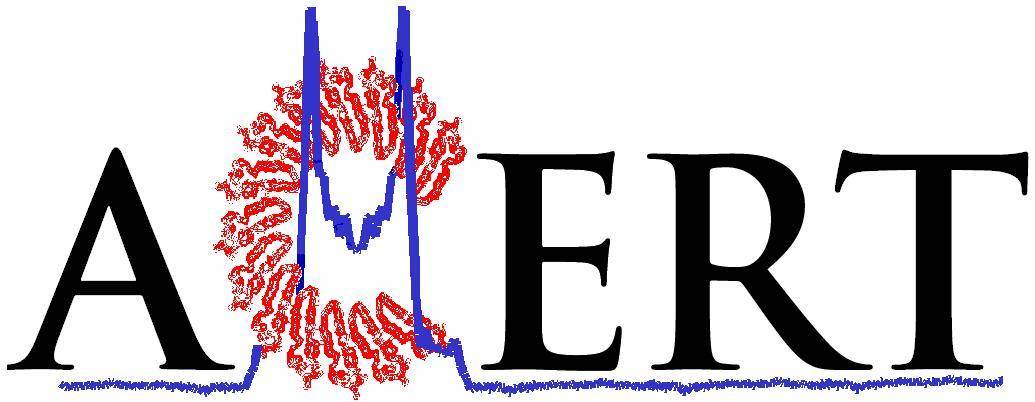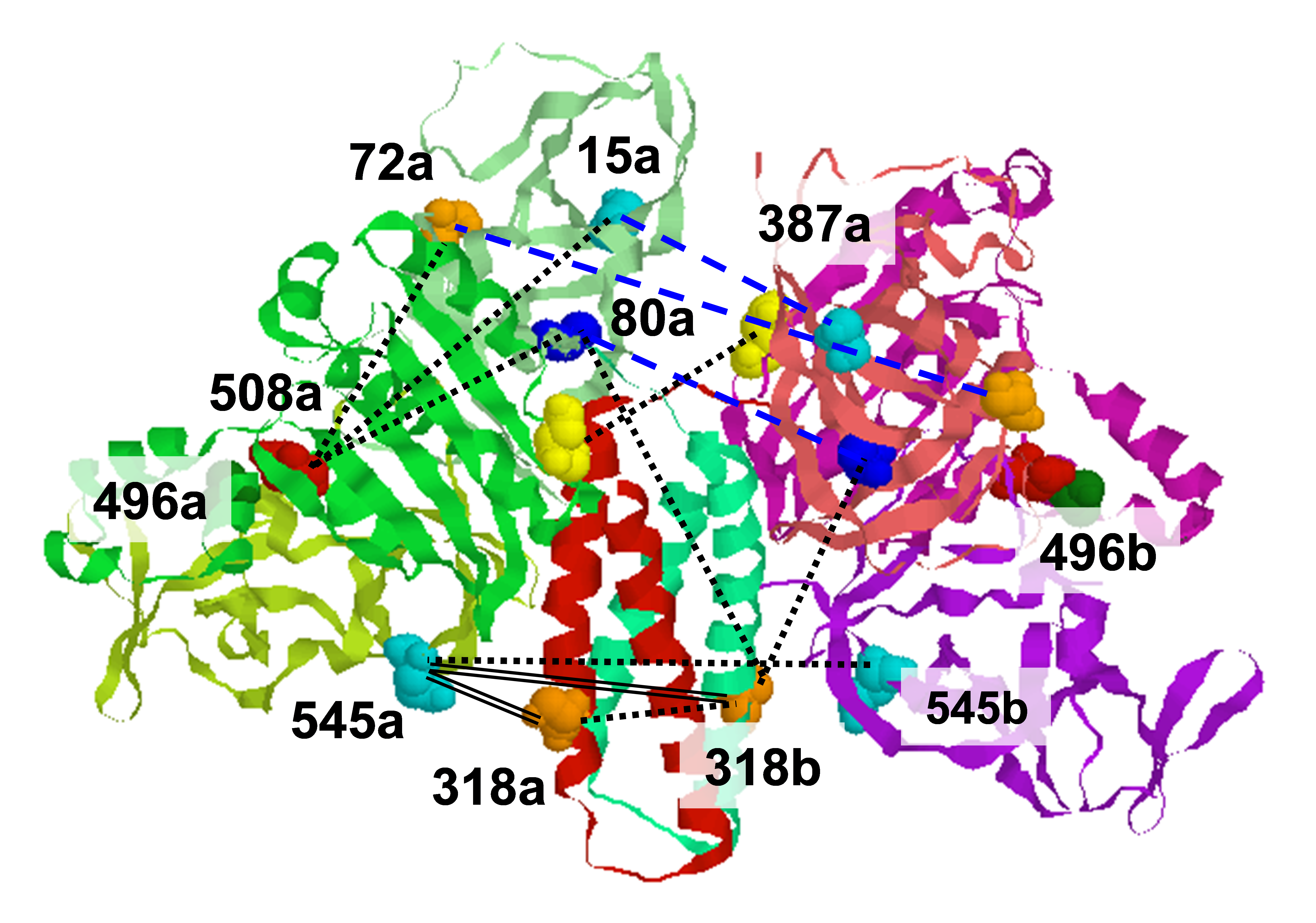.svg) National Institute of General Medical Sciences |
 |
 |
National Biomedical Resource for |
| ACERT's Service and Collaborative Projects | |
Bacterial chemotaxis, a process whereby flagellated bacteria navigate to the optimal chemical environment, is a model system to understand the coupling between extracellular ligand-binding event and change in intracellular enzymatic activity. Transmembrane bacterial chemoreceptors, one of the components of the chemotaxis system, coordinate ligand binding in the periplasmic domain to the activity of the cognate histidine kinase, CheA, bound to the cytoplasmic domain. Structural transitions in the receptors upon ligand binding are well described in periplasmic and transmembrane domains, but less so in the cytoplasmic domain. To explore the conformational changes in the cytoplasmic domain upon ligand binding, and thus to reveal the mechanism of propagation of ligand-binding signal to the kinase, we compare intersubunit distance distributions between various sites in two functionally distinct variants of the homodimeric cytoplasmic domain of E. coli aspartate receptor, Tar. The two variants, H1-2-Tar and H1-Tar, functionally mimic, respectively, the aspartate-bound (inhibitory) and unbound (activating) states of the full-length receptor. By employing pulse-dipolar ESR in coordination with site directed spin labeling, we find broader distributions at the membrane proximal region and narrower distributions at membrane distal region, which directly interacts with CheA, in H1-Tar compared to that in H1-2-Tar, suggesting coordinated changes in dynamics as the means of transmitting the ligand-binding signal to the kinase. Dynamics measurements of the spin labels by continuous wave ESR spectroscopy correlate broader distributions with increased dynamics in nanosecond time scale. Overall, the cytoplasmic domain behave as a long dynamically coupled system, and provide a general mechanism for propagating conformational changes over long distance in modular proteins. Relevant Publication: D. Samanta, P. P. Borbat, B. Dzikovski, J. H. Freed, B. C. Crane, Proc. Natl. Acad. Sci. USA, 112, 2455-2460, 2015 (PMC4345563) |
|
|
|
|
Dipanjan Samanta, Peter P. Borbat, Boris Dzikovski, Jack H. Freed (ACERT) Brian R. Crane (Department of Chemistry and Chemical Biology, Cornell University) |
|
|
|
About ACERT Contact Us |
Research |
Outreach |
ACERT is supported by grant 1R24GM146107 from the National Institute of General Medical Sciences (NIGMS), part of the National Institutes of Health. |
|||||
| ||||||||